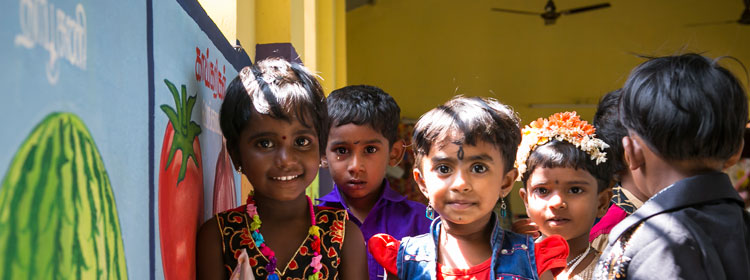F.A.Q.
We get asked about our work often. So here are the answers to your most pressing questions.

1. What is the aim of the CSR work done by SST?
We want to give rural folk in India a better life. We assist them in finding solutions to their problems. This helps them realise that they are the change makers. As a result, they can lead lives with better income, health, education, sanitation and infrastructure.
2. How is SST linked to TVS Motors?
SST is the social arm of TVS Motor Company, one of the leading manufacturers of two-wheelers in the world, and Sundaram-Clayton, among the leading manufacturers of automotive components in India. SST was set up in 1996, motivated by the desire to improve the lives of India’s rural poor.
3. What is the SST model?
SST’s model of serving the community was developed over two decades of experience. We did not have a formula that we could apply because of the incredible diversity not just in the communities but also because of the wide range of needs each community had—which was unique to that village or social group. In India’s villages, there is no one-size-fits all method, and no progress is possible without the full and keen participation of the community members. Mostly, the solutions they seek lie in them, and our role is to guide them to get there— systematically and peacefully.
The SST model was to innovate ways in which the community would own the change that they want to see. We nudge communities to embrace better practices and a higher quality of life, and focus our efforts on these broad areas. Our program of inclusive change aims for a holistic transformation of the community in all aspects. To achieve the above-mentioned goals, SST had to innovate an operating model that would be close to the community, the government, and other stakeholders when it came to implementing the program and yet be distant when it came to owning and sustaining the transformation brough about.
4. What are the broad principles followed by the SST programme for change?
- SST does not work on the donor-recipient model. It seeks community involvement and ownership in all the projects. The community takes responsibility for the continuity of the programs. SST acts only as an enabler.
- SST seeks the active participation of government agencies and the private sector in partnering the change. It helps communities avail of the existing government programs for their benefit.
- SST does not stand as a guarantor for any loans extended to the community. It encourages the community to form self-help groups, farmer co-operatives and youth clubs that are responsible for loan repayment.
- Most SST employees work in the villages. Trust is core to the work they do.
- SST follows the principles of TQM or Total Quality Management, so the change is well thought through and sustainable.
5. Is SST interested in any kind of solution providers for the community work it does?
Yes. SST is always exploring low-cost, eco-friendly innovations for the community. These solutions must use locally available resources, be sustainable and easy to implement and maintain.
6. Will SST be willing to help other firms implement their CSR work?
Yes, to the extent that SST can show through its case studies and learnings how to tackle community issues. It will share its development model, but it does not carry out CSR on behalf of others.
7. Does SST collaborate with other agencies?
Yes, it does, as long as the development goals are in line with the community needs and the model is sustainable change.
8. How do I contact SST?
Please use the ‘Contact Us‘ page on this website.
